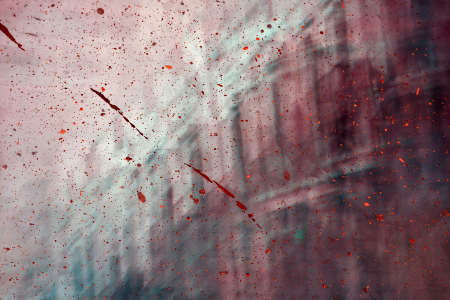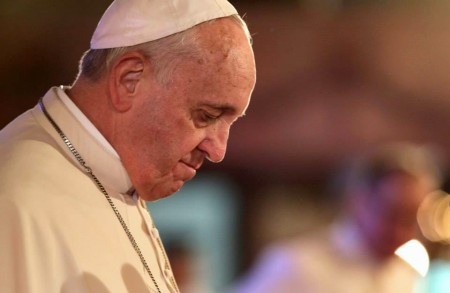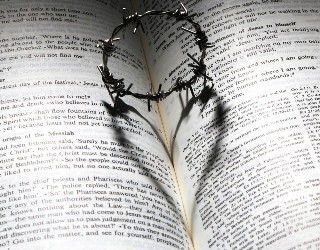We ask you, humbly: don't scroll away.
Hi readers, it seems you use Catholic Online a lot; that's great! It's a little awkward to ask, but we need your help. If you have already donated, we sincerely thank you. We're not salespeople, but we depend on donations averaging $14.76 and fewer than 1% of readers give. If you donate just $5.00, the price of your coffee, Catholic Online School could keep thriving. Thank you.Help Now >
Marco Antonio de Dominis
FREE Catholic Classes
Dalmatian ecclesiastic, apostate, and man of science, b. on the island of Arbe, off the coast of Dalmatia, in 1566; d. in the Castle of Sant’ Angelo, Rome, September, 1624. Educated at the Illyrian College at Loreto and at the University of Padua, he entered the Society of Jesus and taught mathematics, logic, and rhetoric at Padua and Brescia. On leaving the Jesuits (1596), he was, through imperial influence, appointed Bishop of Zengg (Segna, Seng) and Modrus in Dalmatia (Aug., 1600), and transferred (Nov., 1602) to the archiepiscopal See of Spalato. He sided with Venice, in whose territory his see was situated, during the quarrel between Paul V and the Republic (1606-7). That fact, combined with a correspondence with Fra Paolo Sarpi and conflicts with his clergy and fellow-bishops which culminated in the loss of an important financial case in the Roman Curia, led to the resignation of his office in favour of a relative and his retirement to Venice. Threatened by the Inquisition, he prepared to apostatize, entered into communication with the English ambassador to Venice, Sir Henry Wotton, and having been assured of a welcome, left for England in 1616. On his way there, he published at Heidelberg a violent attack on Rome : "Scogli del Cristiano naufragio", afterwards reprinted in England. He was received with open arms by James I, who quartered him upon Archbishop Abbot of Canterbury, called on the other bishops to pay him a pension, and granted him precedence after the Archbishops of Canterbury and York. De Dominis wrote a number of anti-Roman sermons, published his often reprinted chief work, "De Republicâ Ecclesiasticâ contra Primatum Papæ (Vol. 1, 1617; vol. II, 1620, London ; Vol. III, 1622, Hanover ), and took part, as assistant, in the consecration of George Montaigne as Bishop of Lincoln, 14 Dec., 1617. In that same year, James I made him Dean of Windsor and granted him the Mastership of the Savoy.
 Hi readers, it seems you use Catholic Online a lot; that's great! It's a little awkward to ask, but we need your help. If you have already donated, we sincerely thank you. We're not salespeople, but we depend on donations averaging $14.76 and fewer than 1% of readers give. If you donate just $5.00, the price of your coffee, Catholic Online School could keep thriving. Thank you. Help Now >
Hi readers, it seems you use Catholic Online a lot; that's great! It's a little awkward to ask, but we need your help. If you have already donated, we sincerely thank you. We're not salespeople, but we depend on donations averaging $14.76 and fewer than 1% of readers give. If you donate just $5.00, the price of your coffee, Catholic Online School could keep thriving. Thank you. Help Now >
In 1619 De Dominis published in London the first edition of Fra Paolo Sarpi's "History of the Council of Trent"; the work appeared in Italian, with an anti-Roman title page and letter dedicatory to James I. His vanity, avarice, and irascibility, however, soon lost him his English friends; the projected Spanish marriage of Prince Charles made him anxious about the security of his position in England, and the election of Gregory XV (9 Feb., 1621) furnished him with an occasion of intimating, through Catholic diplomatists in England, his wish to return to Rome. The king's anger was aroused when De Dominis announced his intention (16 Jan., 1622), and Star-Chamber proceedings for illegal correspondence with Rome were threatened. Eventually he was allowed to depart, but his chests of hoarded money were seized by the king's men, and only restored in response to a piteous personal appeal to the king. Once out of England his attacks upon the English Church were as violent as had been those on the See of Rome, and in "Sui Reditus ex Anglii Consilium" (Paris, 1623) he recanted all he had written in his "Consilium Profectionis" (London, 1616), declaring that he had deliberately lied in all that he had said against Rome. After a stay of six months in Brussels he proceeded to Rome, where he lived on a pension assigned him by the pope. On the death of Gregory XV (8 July, 1623) the pension ceased, and irritation loosened his tongue. Coming into conflict with the Inquisition he was declared a relapsed heretic, was confined to the Castle of Sant’ Angelo, and there died a natural death. His case was continued after his death, his heresy declared manifest, and his body burned together with his works on 21 Dec., 1624.
In 1611 he published, at Venice, a scientific work entitled: "Tractatus de radiis visus et lucis in vitris, perspectivis et iride", in which, according to Newton, he was the first to develop the theory of the rainbow, by drawing attention to the fact that in each raindrop the light undergoes two refractions and an intermediate reflection. His claim to that distinction is, however, disputed in favour of Descartes.








 Daily Readings for Friday, April 19, 2024
Daily Readings for Friday, April 19, 2024 St. Alphege: Saint of the Day for Friday, April 19, 2024
St. Alphege: Saint of the Day for Friday, April 19, 2024 Stewardship Prayer: Prayer of the Day for Friday, April 19, 2024
Stewardship Prayer: Prayer of the Day for Friday, April 19, 2024

